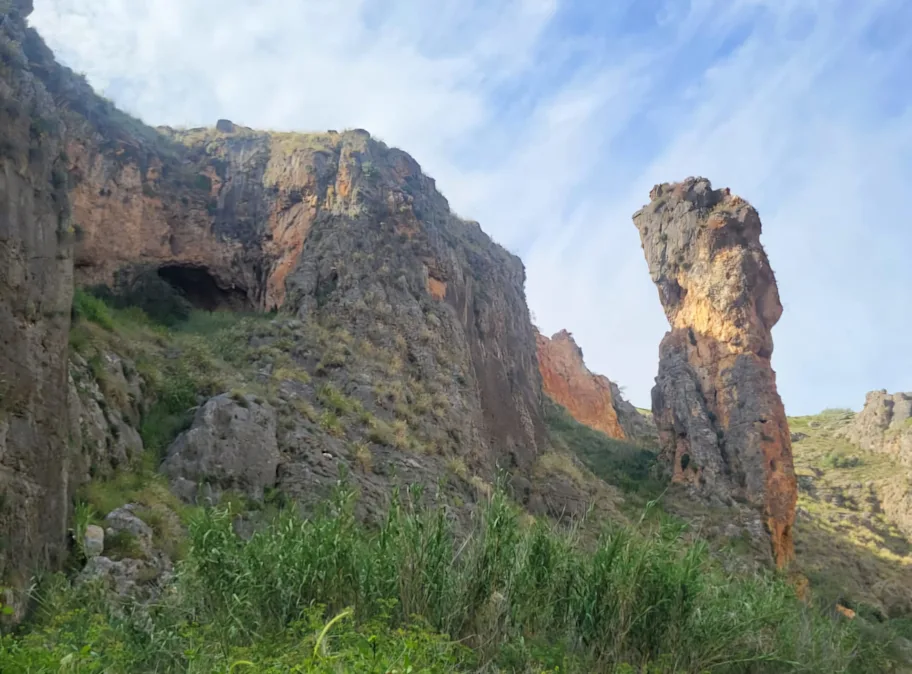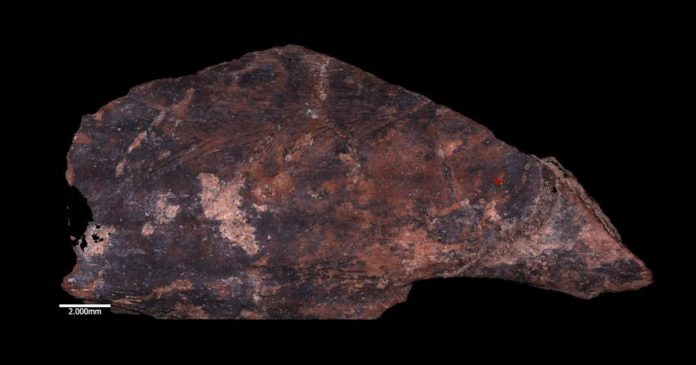A new study published in Frontiers in Environmental Archaeology (July 2025) reveals that Neanderthal groups inhabiting two caves only ~70 km apart in northern Israel—Amud and Kebara—butchered the same prey species in notably different ways, suggesting the presence of distinct local culinary traditions among Neanderthals
The Evidence: Cut‑mark Patterns Tell the Story
Researchers analyzed cut marks on bones from gazelles, fallow deer and occasionally larger ungulates from both cave sites:
Amud Cave: Researchers examined around 249 bone fragments (dated 70,000–50,000 years ago) and found that many were heavily fragmented or burned—40% showed clear signs of burning.

Kebara Cave: About 95 fragments (60,000–50,000 years ago), with fewer burns (~9%) and less fragmentation
Detailed microscopic comparison of 43 bones from Amud and 34 from Kebara showed notable differences: At Amud, cut marks were denser, more often curved or overlapping, and less linear than at Kebara—even when comparing the same animal species and anatomical parts (e.g., gazelle long bones).
Cultural, Not Environmental, Differences
Importantly, researchers couldn’t fully explain these butchery differences by variations in tools, prey species, or anatomical processing:
- Both groups used similar flint toolkits.
- They hunted the same small- to mid-sized ungulates.
- Experimental archaeology and statistical controls ruled out factors like butcher skill or carcass condition.
Lead author Anaëlle Jallon argues these patterns likely reflect culturally transmitted food‑preparation practices, passed down through generations—real “foodways” within Neanderthal communities.
What Drove the Differences?
Researchers propose several possible explanations:
- Different culinary preferences or techniques: Meat may have been aged or dried before butchery at one site, leading to more intense, non‑linear cutting patterns.
- Social organization differences: Varying numbers of individuals involved in carcass processing could influence how cuts were made and overlap.
Broader Significance
This study supports a growing consensus: Neanderthals were not culturally uniform but exhibited behavioral variability across groups—much like Homo sapiens. Dr. Matt Pope of UCL commented:
Neanderthals made these cut marks with their own gestures and movements—they reflect the actions of the people themselves…
Together with other recent findings—such as large‑scale fat processing in Germany or sophisticated plant cooking evident in Southwest Asia—this emerging research paints Neanderthals as adaptive, socially complex, and culturally diverse hominins.
Why It Matters
- Cultural Diversity: The distinct butchery styles at Amud and Kebara challenge any notion of a single Neanderthal “culture.”
- Behavioral Transmission: Patterns suggest social learning and traditions around food processing.
- New Avenues for Research: Identifying how traditions differ across regions, environments, and time could reveal more about Neanderthal social networks and group identity.
Summary Table
| Site | Dates BP | Prey | Cut-mark Style | Interpreted Reason |
|---|---|---|---|---|
| Amud | ~70–50 ky | Gazelles, deer | Dense, overlapping, curved marks | Possibly meat aged/dried; group-specific tradition |
| Kebara | ~60–50 ky | Similar species | Fewer, straighter, more linear marks | Alternate butchery style passed within group |
This research highlights how even in activities as foundational as butchery, Neanderthals expressed group-specific cultural practices. Detailed zooarchaeological studies like this continue to reshape our understanding of their social lives—and remind us how richly varied human-related behaviors were, even among those long extinct.
Published online in July 2025 in Frontiers in Environmental Archaeology.

